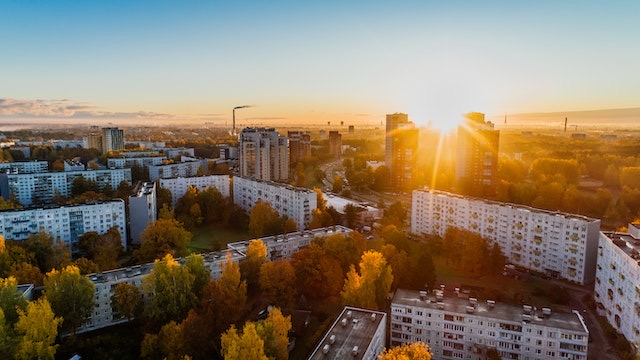Introduction
As late summer slowly yields to the approaching autumn, the U.S. housing market undergoes a subtle transformation. This article delves into the evolving dynamics of the real estate landscape, characterized by the emergence of shifting home values. For homeowners and potential buyers, understanding the factors behind this transition is crucial.
Signs of a Changing Market
In this section, we’ll explore the key indicators and factors contributing to the shift in home values.
Rising Interest Rates
One of the primary drivers behind the shifting home values is the surge in interest rates. The Federal Reserve has initiated a series of interest rate hikes to combat inflation, directly affecting mortgage rates. As mortgage rates climb, the cost of borrowing for potential homebuyers rises, reducing affordability and leading to a decline in housing demand.
The increase in interest rates has led to a slowdown in home sales, with first-time buyers and those with limited budgets particularly impacted. The higher borrowing costs have priced many prospective buyers out of the market, causing demand to dwindle and subsequently affecting home values.
Housing Inventory
Another significant factor contributing to the shift in home values is housing inventory. Numerous markets across the United States have grappled with a shortage of available homes. While limited inventory has been a driving force behind rising prices in recent years, the pendulum is beginning to swing the other way.
Low inventory levels have created a fiercely competitive environment for homebuyers, characterized by bidding wars. However, as the market cools down, more sellers are likely to list their properties, increasing the supply of homes. This shift toward a more balanced market is anticipated to exert downward pressure on home values.
Economic Uncertainty
Economic uncertainty is the third factor influencing the real estate market. Ongoing global events, such as trade tensions and the potential for economic downturns, can impact consumer confidence and, consequently, their willingness to make home purchases.
Uncertainty can lead to a ‘wait-and-see’ approach among buyers, with many hesitating to commit to significant financial investments in an unstable economic climate. This cautious mindset can further suppress demand and contribute to the shift in home values.
The Impact on Homeowners
The shifting home values have varying effects on different segments of homeowners.
Current Homeowners
For current homeowners, the shift in home values can be a source of concern, especially for those looking to sell or refinance their properties. Reduced home values may result in a smaller return on investment or even negative equity, where homeowners owe more on their mortgage than the current value of their homes.
However, it’s essential to remember that real estate is a long-term investment. While home values may fluctuate, they tend to appreciate over time. Homeowners who don’t need to sell immediately can weather market fluctuations and wait for values to rebound.
Prospective Buyers
Conversely, the shift in home values can offer opportunities for prospective buyers. Lower prices mean enhanced affordability, making homeownership more accessible to a broader spectrum of individuals and families. However, these buyers should remain vigilant about interest rates, as higher rates can offset the benefits of reduced home prices.

What Lies Ahead?
As the real estate market experiences a shift, it’s crucial to monitor the ongoing changes. The transition in home values may continue, stabilize, or even reverse course in response to various economic and market factors. Staying informed and seeking guidance from real estate experts can help homeowners and prospective buyers make informed decisions in this evolving landscape.
Conclusion
As late summer transitions into autumn, the U.S. housing market undergoes a subtle transformation, characterized by the emergence of shifting home values. The surge in interest rates, changing housing inventory dynamics, and economic uncertainty are pivotal factors contributing to this trend.
For homeowners, it’s an opportune time to assess their financial strategies and consider the enduring benefits of real estate investments. For prospective buyers, the evolving market can provide newfound affordability, but it’s imperative to stay informed and be mindful of the implications of interest rates.
As we move forward, the real estate market will continue to evolve. Understanding these changes and their implications is paramount for anyone navigating the dynamic landscape of U.S. real estate.










